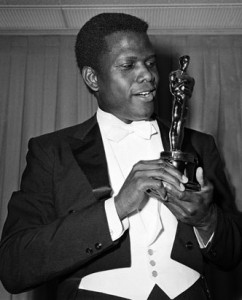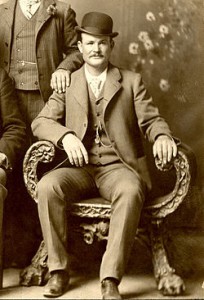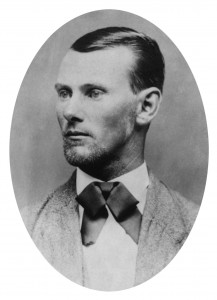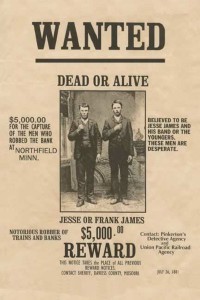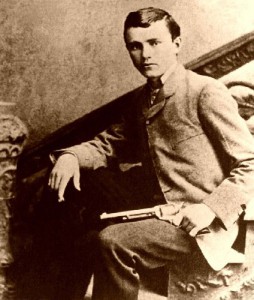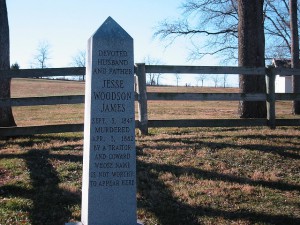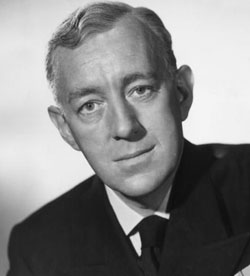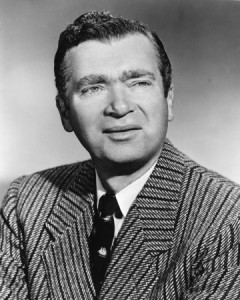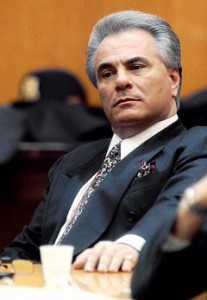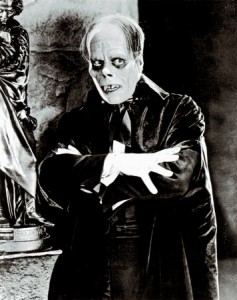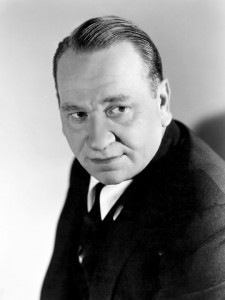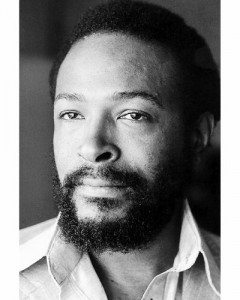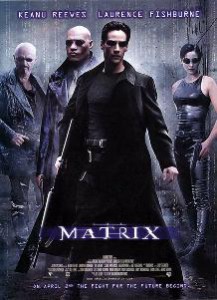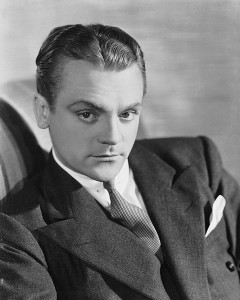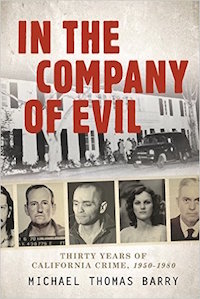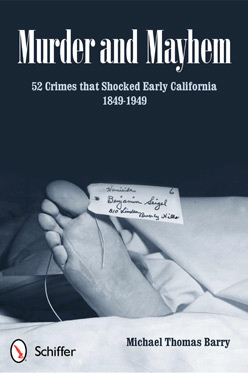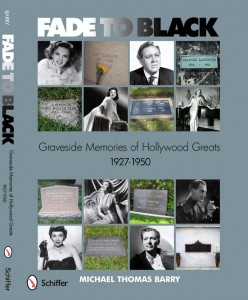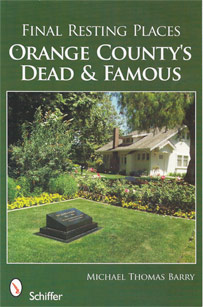04.13
04.13
04.13
04.03
On this date in 1882, one of America’s most famous criminals, Jesse James, is shot to death by fellow gang member Robert Ford, who betrayed James For 16 years, Jesse and his brother, Frank, committed robberies and murders throughout the Midwest. Detective magazines and pulp novels glamorized the James gang, turning them into mythical Robin Hoods who were driven to crime by unethical landowners and bankers. In reality, Jesse James was a ruthless killer who stole only for himself.
The teenage James brothers joined up with southern guerrilla leaders when the Civil War broke out. Both participated in massacres of settlers and troops affiliated with the North. After the war was over, the quiet farming life of the James brothers’ youth no longer seemed enticing, and the two turned to crime. Jesse’s first robbery occurred on February 13, 1866, in Liberty, Missouri. Over the next couple of years, the James brothers became the suspects in several bank robberies throughout western Missouri. However, locals were sympathetic to ex-southern guerrillas and vouched for the brothers. Throughout the late 1860s and early 1870s, the James gang robbed only a couple banks a year, otherwise keeping a low profile.
In 1873, the James gang got into the train robbery game. During one such robbery, the gang declined to take any money or valuables from southerners. The train robberies brought out the Pinkerton Detective Agency, employed to bring the James gang to justice. However, the Pinkerton operatives’ botched attempt to kill James left a woman and her child injured and elicited public sympathy for Jesse and Frank James. The James gang suffered a setback in 1876 when they raided the town of Northfield, Missesota. The Younger brothers, cousins of the James brothers, were shot and wounded during the brazen midday robbery. After running off in a different direction from Jesse and Frank, the Younger brothers were captured by a large posse and later sentenced to life in prison. Jesse and Frank, the only members of the gang to escape successfully, headed to Tennessee to hide out. After spending a few quiet years farming, Jesse organized a new gang.
The Ford brothers were on the fringe of the new gang, but they disliked Jesse intensely and decided to kill him. On April 3, while Jesse’s mother made breakfast, the new gang met to hear Jesse’s plan for the next robbery. When Jesse turned his back to adjust a picture on the wall, Bob Ford shot him several times in the back.
His tombstone reads, “Jesse W. James, Died April 3, 1882, Aged 34 years, 6 months, 28 days, Murdered by a traitor and a coward whose name is not worthy to appear here.”
04.02
Who was born on this date:
Actor Alec Guinness was born on April 2, in London. In films, Guinness was initially associated mainly with the Ealing comedies, and particularly for playing eight different characters in Kind Hearts and Coronets. In 1952, he was cast in his first romantic lead role, opposite Petula Clark in The Card. He won particular acclaim for his work with director David Lean. After appearing in Lean’s Great Expectations and Oliver Twist, he was given a starring role opposite William Holden in The Bridge on the River Kwai. For his performance Guinness won the Academy Award for best actor. Despite a difficult and often hostile relationship with Lean, he continued to be cast in character roles such as Lawrence of Arabia; Doctor Zhivago; and A Passage to India. Other notable film roles of this period included The Swan (1956) with Grace Kelly, The Horse’s Mouth (1958) for which he was nominated for an Academy Award; Our Man in Havana (1959); and The Fall of the Roman Empire (1964).
Guinness’s role as Obi-Wan Kenobi in the original Star Wars trilogy, beginning in 1977, brought him worldwide recognition by a new generation. Guinness agreed to take the part on the condition that he would not have to do any publicity to promote the film. He was also one of the few cast members who believed that the film would be a box office hit; he negotiated a deal for 2% of the gross, which made him very wealthy in his later life. His role would also result in Golden Globe and Academy Award nominations. Despite these rewards, Guinness soon became unhappy with being identified with the part, and expressed dismay at the fan-following that the Star Wars trilogy attracted. Guinness died on August 5, 2000, from liver cancer at Midhurst in West Sussex. He had been receiving hospital treatment for glaucoma, and had recently also been diagnosed with prostate cancer. He was buried at Petersfield Cemetery in Petersfield, England.
Actor Buddy Ebsen was born on April 2, 1908 in Belleville, Illinois. A performer for seven decades, he had starring roles as Jed Clampett in the long-running television series The Beverley Hill Billies and as the title character in the 1970s detective series Barnaby Jones. Ebsen also played Fess Parker’s sidekick in Walt Disney’s Davy Crockett miniseries (1953–54), and was cast as the Tin Man in The Wizard of Oz (1939) until he fell ill due to an allergy to the makeup. he died on July 6, 2003 from Pneumomia in Torrance, California and his ashes were scattered at sea.
04.02
On this date in 1992, a jury in New York finds mobster John Gotti, nicknamed the Teflon Don for his ability to elude conviction, guilty on 13 counts, including murder and racketeering. In the wake of the conviction, the assistant director of the FBI’s New York office, James Fox, was quoted as saying, “The don is covered in Velcro, and every charge stuck.” On June 23 of that year, Gotti was sentenced to life in prison, dealing a significant blow to organized crime.
John Joseph Gotti, Jr., was born in the Bronx, New York, on October 27, 1940. He rose through the ranks of the Gambino crime family and seized power after ordering the December 1985 murder of then-boss Paul Castellano outside a Manhattan steakhouse. Behind closed doors, Gotti was a ruthless, controlling figure. Publicly, he became a tabloid celebrity, famous for his swagger and expensive suits, which earned him another nickname, the Dapper Don.
During the 1980s, Gotti’s lawyer Bruce Cutler won him acquittals three times. A jury member in one of those trials was later convicted of accepting a bribe to acquit the mob boss. In December 1990, Gotti was arrested at the Ravenite Social Club, his headquarters in New York City’s Little Italy neighborhood. The ensuing trial, which started in January 1992, created a media frenzy. Salvatore “Sammy the Bull” Gravano, one of Gotti’s top soldiers, made a deal with the government and testified in court against his boss. Gravano admitted to committing 19 murders, 10 of them sanctioned by Gotti. In addition, prosecutors presented secret taped conversations that incriminated Gotti. After deliberating for 13 hours, the jury, which had been kept anonymous and sequestered during the trial, came back with a verdict on April 2, 1992, finding Gotti guilty on all counts. The mob boss was sent to the U.S. Penitentiary at Marion, Illinois, where he was held in virtual solitary confinement. On June 10, 2002, Gotti died of throat cancer at age 61 at a Springfield, Missouri, medical center for federal prisoners.
04.01
Who was born on this date:
Actor Lon Chaney, Sr. was born on April 1, 1883 in Colorado Springs. Colorado. He is regarded as one of the most versatile and powerful actors of early cinema, renowned for his characterizations of tortured, often grotesque and afflicted characters, and his groundbreaking artistry with makeup. He is known for his starring roles in such silent horror films such as The Hunchback of Notre Dame and The Phantom of the Opera. His ability to transform himself using makeup techniques he developed earned him the nickname “The Man of a Thousand Faces.” His son Lon Chaney, Jr. also starred in numerous horror movies such as The Wolfman. Lon Chaney, Sr., died from a throat hemorrhage on August 26, 1930 in Los Angeles, California and was buried within the Great Mausoleum at Forest Lawn Glendale.
Actor Wallace Beery was born on April 1, 1885 in Kansas City, Missouri. He is best known for his portrayal of Bill in Min and Bill opposite Marie Dressler, as Long John Silver in Treasure Island, and his titular role in The Champ (1931) for which he won the Best Actor Academy Award. Beery appeared in some 250 movies over a 36-year span. He died on April 15, 1949 in Beverly Hills, California from a heart attack and was buried at Forest Lawn Glendale.
04.01
On this date in 1984, Marvin Gaye was shot and killed by his father. He was the Prince of Motown, the soulful voice behind hits as wide-ranging as “How Sweet It Is (To Be Loved By You)” and “Mercy Mercy Me (The Ecology).” Like his label-mate Stevie Wonder, Gaye both epitomized and outgrew the crowd-pleasing sound that made Motown famous. Over the course of his roughly 25-year recording career, he moved successfully from upbeat pop to “message” music to satin-sheet soul, combining elements of Smokey Robinson, Bob Dylan and Barry White into one complicated and sometimes contradictory package. But as the critic Michael Eric Dyson put it, the man who “chased away the demons of millions…with his heavenly sound and divine art” was chased by demons of his own throughout his life.
If the physical cause of Marvin Gaye’s death was straightforward—”Gunshot wound to chest perforating heart, lung and liver,” according to the Los Angeles County Coroner—the events that led to it were much more tangled. On the one hand, there was the longstanding conflict with his father dating back to childhood. Marvin Gay, Sr., (the “e” was added by his son for his stage name) was a preacher in the Hebrew Pentecostal Church and a proponent of a strict moral code he enforced brutally with his four children. He was also, by all accounts, a hard-drinking cross-dresser who personally embodied a rather complicated model of morality. By some reports, Marvin Sr. harbored significant envy over his son’s tremendous success, and Marvin Jr. clearly harbored unresolved feelings toward his abusive father.
Those feelings spilled out for the final time in the Los Angeles home of Marvin Gay, Sr., and his wife Alberta. Their son the international recording star had moved into his parents’ home in late 1983 at a low point in his struggle with depression, debt and cocaine abuse. Only one year removed from his first Grammy win and from a triumphant return to the pop charts with “Sexual Healing,” Marvin Gaye was in horrible physical, psychological and financial shape, and now he found himself living in the same house as the man who must have been at the root of many of his struggles.
After an argument between father and son escalated into a physical fight on the morning of April 1, 1984, Alberta Gay was trying to calm her son in his bedroom when Marvin Sr. took a revolver given to him by Marvin Jr. and shot him three times in his chest. Marvin Gaye’s brother, Frankie, who lived next door, and who held the legendary singer during his final minutes, later wrote in his memoir that Marvin Gaye’s final, disturbing statement was, “I got what I wanted….I couldn’t do it myself, so I made him do it.”
03.31
On this day in 1999, the writing and directing sibling team of Andy and Larry Wachowski release their second film, the mind-blowing science-fiction blockbuster The Matrix.
Born and raised in Chicago, the Wachowski brothers both dropped out of college and started a house-painting and construction business before they got into the film industry. They collaborated on two screenplays, the second of which was made into the action movie Assassins (1995), starring Sylvester Stallone and Antonio Banderas. A year later, the Wachowskis wrote, directed and executive-produced their debut film, Bound. Critics praised the relatively low-budget crime thriller, about lesbian lovers who steal from the mob, and it became a cult hit.
The brothers’ next project, however, brought them to a whole new level. Filmed for $70 million, The Matrix was a stylish, innovative and visually spectacular take on a familiar premise–that humans are unknowing inhabitants of a world controlled by machines–central to films such as Alien and 2001: A Space Odyssey. The Matrix starred Keanu Reeves as a computer hacker who learns that human-like computers have created a fake world, the Matrix, to enslave the remaining humans while keeping them in the dark about their dire fate. Guided by the sleek, mysterious Morpheus (Laurence Fishburne) and Trinity (Carrie-Ann Moss), the hacker is dubbed Neo and told he alone can play the crucial role in deciding the fate of the world. Packed with slow-motion camera tricks and references from a myriad of sources–including comic books, the Bible, Lewis Carroll, Eastern philosophy and film noir–The Matrix also stunned viewers with its Hong Kong-style fight scenes, choreographed by the martial-arts master Yuen Wo Ping and performed with the help of invisible wires allowing the characters to fly through the air. Greeted with enthusiasm by computer-gaming fanatics and mainstream audiences alike, The Matrix earned a staggering $470 million worldwide and won four Academy Awards, for Best Editing, Best Sound Effects Editing, Best Visual Effects and Best Sound.
The Wachowskis had always envisioned The Matrix as a trilogy, and they shot back-to-back sequels, The Matrix Reloaded and The Matrix Revolutions, in Australia. Released six months apart in 2003, they were generally agreed to be less successful than the original film. All in all, however, the franchise–including a best-selling video game, Enter the Matrix–earned the production company, Warner Brothers, more than $1 billion. The Wachowskis, meanwhile, became famously reclusive, refusing to promote the Matrix sequels or give interviews. The air of mystery surrounding the brothers was exacerbated by rumors that Larry Wachowski had undergone a sex change and was living as a woman, Lana Wachowski. As reported by Fox News, Joel Silver, producer of the Matrix films, emphatically denied these reports in a 2007 interview.
As a follow-up to their phenomenal success, the Wachowskis wrote and produced for Animatrix, a series of short films based on The Matrix, and wrote and produced the provocative action thriller V for Vendetta (2006). In 2008, the brothers returned to directing (as well as writing and producing) with Speed Racer, a film adaptation of the Japanese anime series by the same name.
03.31
On this date in 1999, law enforcement officers in Elephant Butte, New Mexico, began digging for evidence near the mobile home of David Parker Ray and Cynthia Lea Hendy after more evidence came to light about the couple’s activities. On March 22, a twenty-two year old woman was found running naked, except for a padlocked metal collar around her neck, down an unpaved road near Elephant Butte State Park. She told police that Ray and Hendy had abducted her three days earlier in Albuquerque before bringing her to the mobile home where she was raped and tortured.
As police delved deeper into Ray and Hendy’s background they became convinced that the woman was not the only victim. Upon hearing initial news reports, another woman called New Mexico police with her own tale of sexual torture at the hands of the couple. Then, an acquaintance of Hendy told investigators that she had previously spoken about Ray burying people near their home.
The woman escaped when Ray was at his job at the State Park. She got into a scuffle with Hendy and hit her on the back of the head with an ice pick. Hendy pled guilty to being an accomplice and then even more was revealed. Soon David Ray’s daughter Jesse was also charged for her participation in a similar 1996 attack. And the Ray’s friend Dennis Yancy was charged with the murder of a young woman who disappeared from in 1997 from an Elephant Butte bar.
03.30
Who died on this date:
On March 30, 1986, actor James Cagney died. He was born on July 17, 1899 in New York City. Although he won acclaim and major awards in a wide variety of performances, he is best remembered for playing tough guys. Cagney’s seventh film, The Public Enemy, became one of the most influential gangster movies of the period. Notable for its famous grapefruit scene, the film thrust Cagney into the spotlight, making him one of Warners’ and Hollywood’s biggest stars. In 1938, he received his first Academy Award for Best Actor nomination, for Angels with Dirty Faces, before winning in 1942 for his portrayal of George M. Cohan in Yankee Doodle Dandy. He was nominated a third time in 1955 for Love Me or Leave Me. Cagney retired for twenty years in 1961, spending time on his farm, before returning for a part in Ragtime, mainly to aid his recovery from a stroke. He died on March 30, 1986 from a heart attack in Stanford, New York and is buried at Gate of Heaven Cemetery in Hawthorne, New York.

